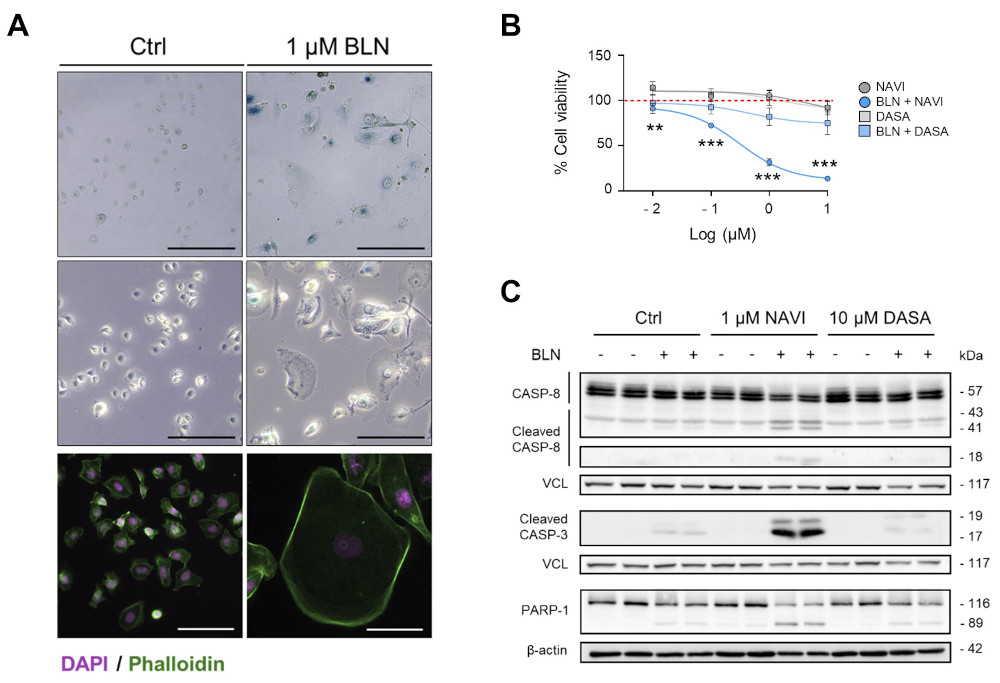- The Hearing Neuropathology and Myelinopathies group of the Instituto de Investigaciones Biomédicas Sols-Morreale publishes an article exploring cellular senescence as a therapeutic target for vestibular schwannomas, rare tumors of the auditory system
Vestibular schwannomas are complex, benign, heterogeneous tumors that arise from the Schwann cells of the cochleovestibular nerve, which is responsible for hearing and balance. They are divided into two subtypes: sporadic, which account for about 95% of cases, and those associated with a rare disease, NF2-related Schwannomatosis, which account for the remaining 5% of cases. They can cause hearing loss, balance problems and, in some cases, death due to brainstem compression. There is an urgent need to find pharmacotherapies for these tumors, as surgical removal and stereotactic radiosurgery are the only effective treatments available at the moment.
The Neuropatología de la Audición y Mielinopatías group at the Instituto de Investigaciones Biomédicas Sols-Morreale (IIBM), CSIC-UAM led by Prof. Isabel Varela-Nieto and also a member of the Centro de Investigación en Red de Enfermedades Raras (CIBERER) deepen the study of this type of rare tumors with the publication of a scientific article in the journal Hearing Research. The publication, in which the otorhinolaryngology department of the Hospital Universitario La Paz in Madrid has also collaborated, studies cellular senescence as a possible therapeutic target for vestibular schwannoma.

Neuropatología de la Audición y Mielinopatías Group. Inés Méndez Grande, Sandra Franco Caspueñas, Carmen García Montoya, Julio Contreras, José Miguel Cosgaya Manrique, Belén Martín, Elena Torres, Ana María Jiménez Lara, Isabel Varela Nieto, Rafael Cediel, Silvia Murillo Cuesta
The senescence state appears in cells in response to different types of stimuli, both physiological and pathological, and involves changes in cells, both morphological and alterations in cell metabolism, as well as macromolecular damage. In this work, the researchers analyzed the effect of different chemotherapeutic drugs already commonly used in other pathologies on vestibular schwannoma cells and characterized the senescent phenotype. Subsequently, senescent vestibular schwannoma cells are killed with senolytic drugs without affecting proliferative cells.
The authors of this study propose a pharmacological therapy to treat patients affected by vestibular schwannoma called 'two-punch' therapy, which is based on the induction of senescence followed by the elimination of senescent cells with senolytic drugs.

Two-punch strategy against vestibular schwannoma. A. After bleomycin (BLN) treatment, immortalised HEI-193 vestibular schwannoma cells undergo morphological changes associated with the senescent phenotype. In addition, a blue precipitate is observed in the lysosomal compartment, indicative of senescence-associated B-galactosidase (SA-β-GAL) enzyme activity, the most widely accepted marker of senescent cells. B. The senolytic agent Navitoclax induces specific death of senescent HEI-193 cells without affecting proliferative cells. C. The decrease in cell viability observed in panel B correlates with an increase in the expression levels of proteins involved in cell apoptosis, indicating that senescent HEI-193 cells enter apoptosis after treatment with navitoclax.
Franco-Caspueñas S, García-Montoya C, Contreras J, Lassaletta L, Varela-Nieto I, Jiménez-Lara AM. Uncovering Cellular Senescence as a Therapeutic Target in NF2-related Vestibular Schannoma. Hear Res. 2024 Dec 109165. doi.org/10.1016/j.heares.2024.109165